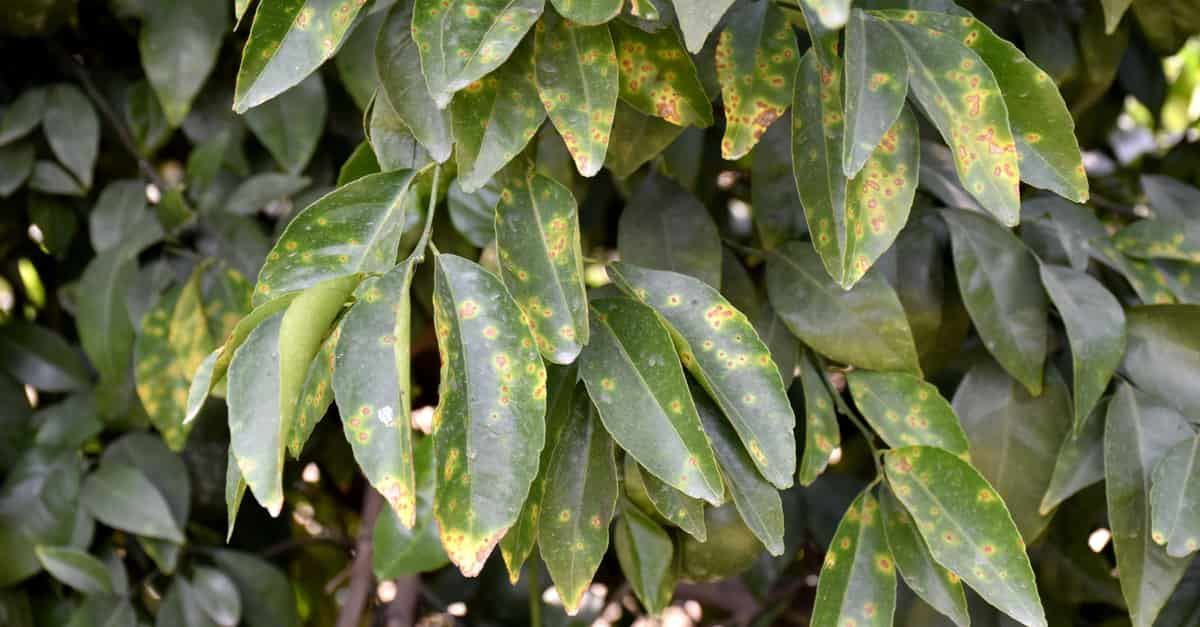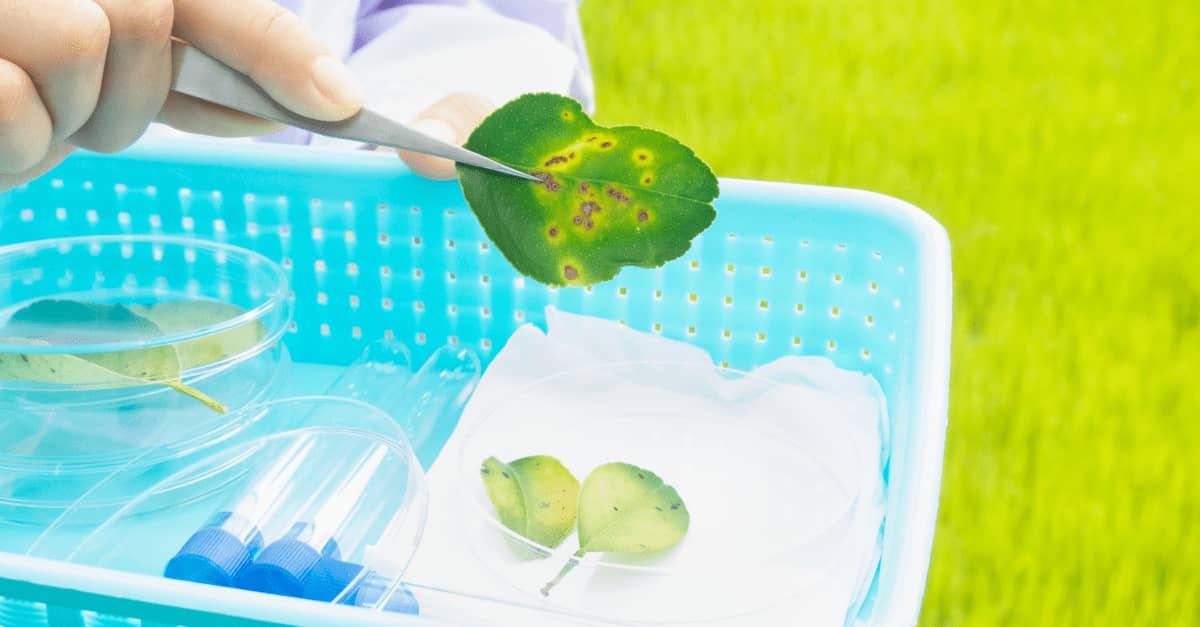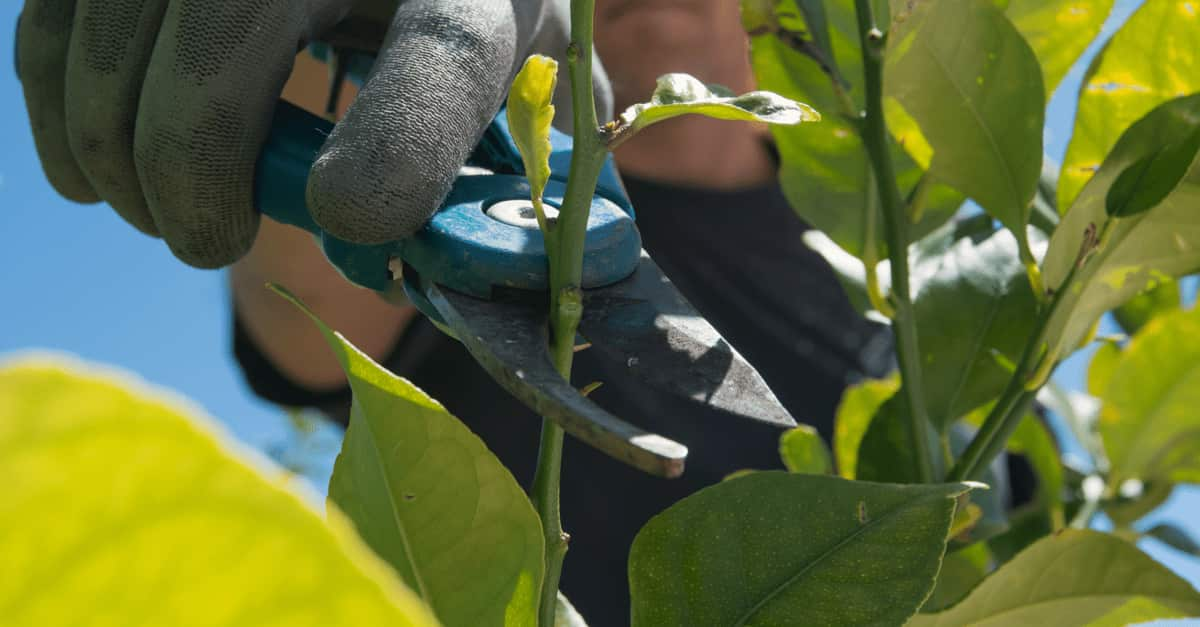Diseases caused by bacteria seriously endanger our crops, causing symptoms in plants, that are not easy to control if they are not detected in time to apply specific solutions. Therefore, knowing the treatment of citrus canker is an essential requirement so that those responsible for agricultural operations can guarantee the viability of our citrus crops in the long term.
What is Citrus Canker?

It is a disease of crops caused by the bacterium Xanthomonas axonopodis. Its appearance is favored by environmental factors such as heat, humidity, and wind. Besides this, plants with wounds, bruises, or nutritional deficiencies are more likely to suffer it. Consequently, in these situations, the treatment of citrus canker is essential. One of the most noticeable indications of this bacterium’s contagion is the appearance of brown spots on the leaves, which become darker as time passes and can even end in necrosis. That is, canker is liable to end up causing the death of plant tissues.
Detection

The detection of this disease in the crops is done by analyzing the infected tissues, which allows identifying the most superficial symptoms. In plants affected by this bacterium, we can see how the affected parts form a series of concentric rings, in which the necrotic or dead tissue ends up sinking. These rings develop from an initial ring. Therefore, it is of utmost importance we pay attention to the changes in the plant to be able to stop the canker before it ends up completely damaging it.
Spreading
Its primary vector is man, its long-distance dissemination through the transport of infected whole plants or different parts of plants, say, buds or twigs. So far, there is no known epidemic that has been caused by an infested fruit, also over a long distance. The passage of man with the machinery and with different agricultural or tillage materials through infested orchards and their transfer to healthy orchards and the rains accompanied by winds are a significant factor for the dissemination over short distances; it has been noted that Hurricanes and tornadoes can equally spread citrus canker bacteria over long distances.
Treatment of Citrus Canker
Each crop has an appropriate treatment to eliminate infections by this bacterium. Therefore, it is necessary to know and understand the specific options for each case. Within the treatment of citrus canker, an essential measure is to destroy the affected tissues to prevent its progression. Besides, the use of contact and penetrating phytosanitary products is recommended just after infection to minimize damage. Citrus canker’s treatment can be accompanied by the use of cupric fungicides, which are generally the most common control measure for fungal diseases. Their spectrum of action makes them the most valid treatments, although their total effectiveness is not guaranteed. This is to avoid other diseases in the crops since they are susceptible to cancer-causing them to get sick from something else. In citrus canker, the use of cupric fungicides is recommended, which, together with benzimidazoles, can prevent and slow the development of this disease. In any case, for these chemical systems to give good results, the affected fruits, branches, and leaves will also have to be removed.
Biological Treatments
Biological treatments are those that have a microorganism as an active ingredient. In this way, they can effectively control different types of pathogens. Therefore, they are helpful in the treatment of citrus canker. One of the characteristics of this type of treatment is that they use organisms that occur naturally in the soil or on the surface of the plants. For this reason, they are approved for organic production. Furthermore, these living organisms’ presence indicates that the mode of action of these treatments is different from that of traditional synthetic treatments. Of course, it is also worth noting that the application of bio treatments has practically no adverse effects on the body or the environment. For this reason, they are increasingly the option of choice for the treatment of canker and other diseases caused by different pathogens. In any case, the application of all these treatments does not prevent us from having to take specific essential preventative measures to reduce the chances of the development of this disease. These include ensuring aeration of the crop, improving soil drainage, and, above all, eliminating any of the crop affected by the disease. We must remove the infected plant itself from the soil.
Tips to Prevent

- Disinfect the soil before planting.
- Improve soil drainage and avoid water logging of irrigation water.
- Space out the planting frames when a climate conducive to this disease is expected.
- Eliminate wild herbs.
- Avoid monoculture and increased pathogen density in the soil.
- Do not wet the plants’ aerial parts, such as the leaves, stems, and flowers.
- Do not leave crop remains that are affected by the disease since they are a means of propagation.
- Clean your pruning tools before use, and after use with pharmacy rubbing alcohol or a few drops of the washing up liquid.
Bottom Line
The bacterium Xanthomonas axonopodis is the causal agent of “Citrus Canker,” one of the most important citrus plants’ diseases. This bacterium is spread over long distances through infected plant material, while over short distances through raindrops (water splashes). Besides, the damage caused by Phyllocnistis citrella, commonly known as the “citrus leafminer” bug, facilitates the infection of this bacterium. Defoliation, premature fall, and staining of fruits, as well as the decrease in the growth and vigor of the trees, are the main symptoms that reduce the production and quality of the fruits.

